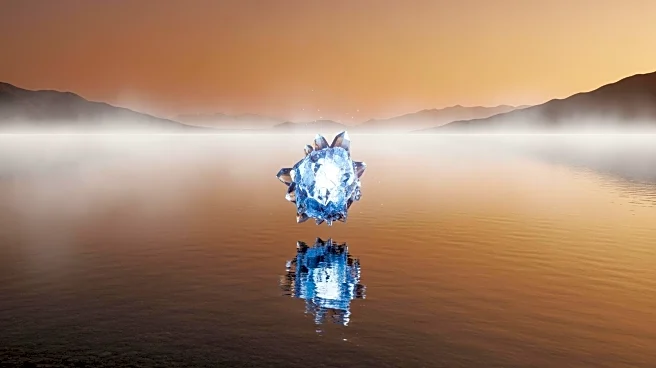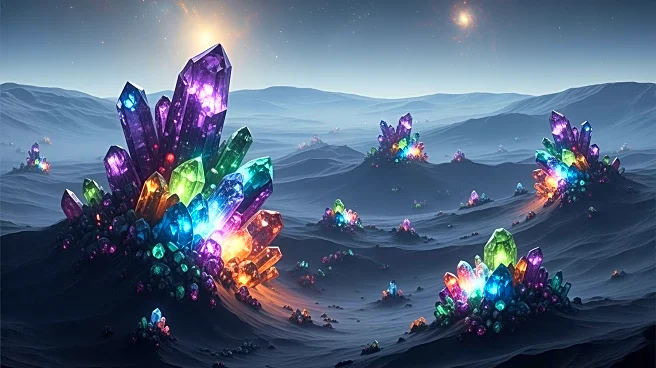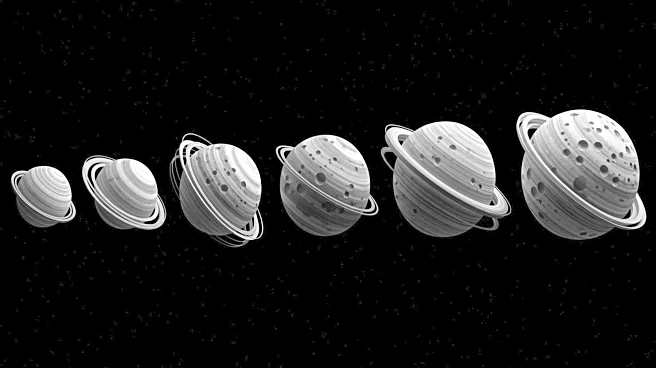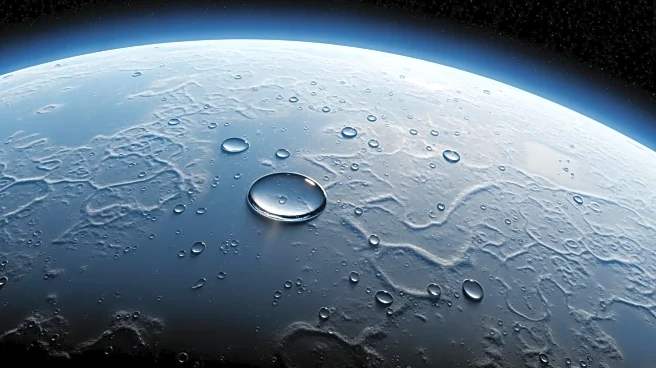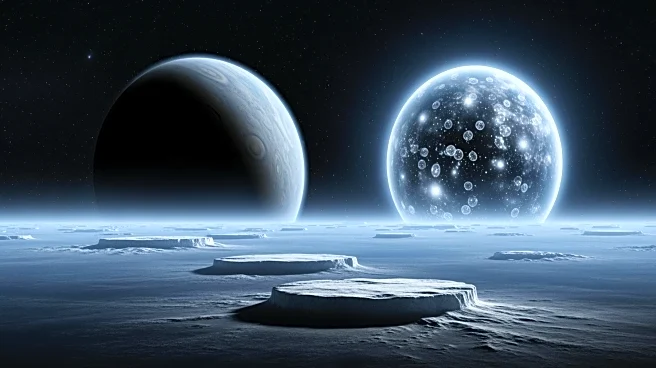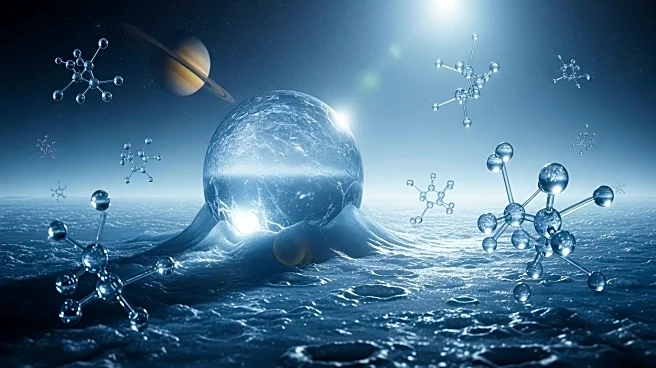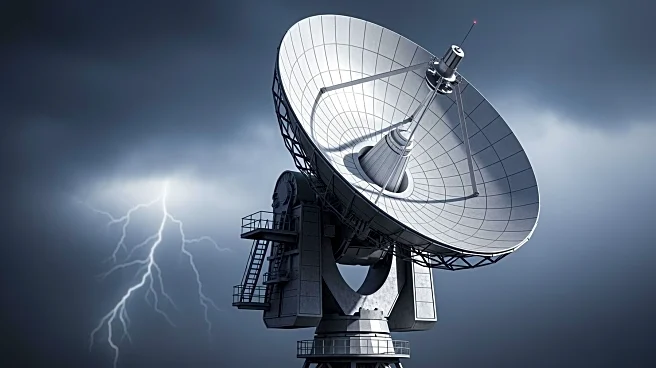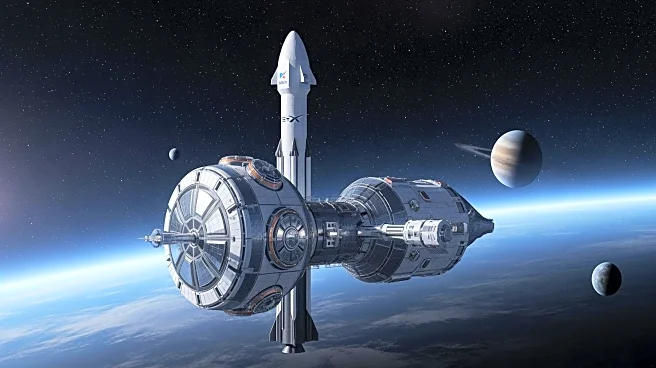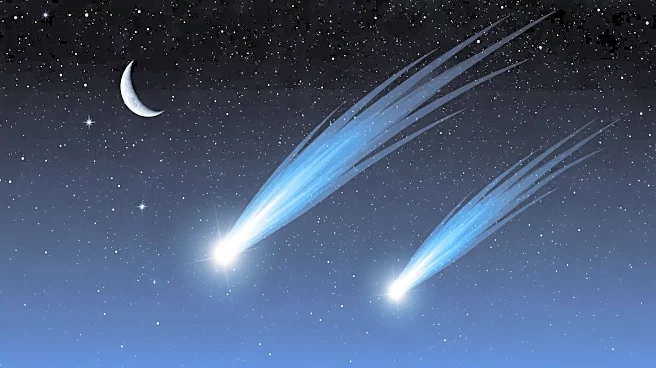What's Happening?
Recent experiments and simulations have revealed surprising chemical interactions on Saturn's moon Titan. Researchers at NASA's Jet Propulsion Laboratory and Chalmers University of Technology discovered
that hydrogen cyanide crystals can mix with liquid hydrocarbons like methane and ethane, forming stable co-crystals. This finding challenges the traditional chemistry rule that polar and non-polar substances do not mix. The study suggests that Titan's atmosphere and surface may have more complex chemical interactions than previously thought, potentially offering insights into prebiotic chemistry.
Why It's Important?
Understanding Titan's chemistry is vital for astrobiology, as it may resemble the conditions on early Earth before life began. The discovery of co-crystals on Titan could provide clues about the building blocks of life, such as amino acids and nucleobases. This research enhances our knowledge of chemical processes in extreme environments, which could inform the search for life elsewhere in the solar system. Titan's unique conditions make it a valuable natural laboratory for studying the potential for life beyond Earth.
What's Next?
NASA's Dragonfly mission, set to arrive on Titan in 2034, will further investigate these chemical interactions. The mission aims to sample surface materials, including hydrogen cyanide ice, to verify the recent findings and explore Titan's potential for hosting life. Continued research will focus on understanding the implications of these chemical processes for astrobiology and the evolution of complex molecules in the solar system.
